
16 minute read
A Night to Celebrate
Their stories are unique but their focus is common. They are all men for De Smet and men for others.
” MIKE FADDIS ’71 Referring to De Smet Jesuit’s Hall of Fame Inductees
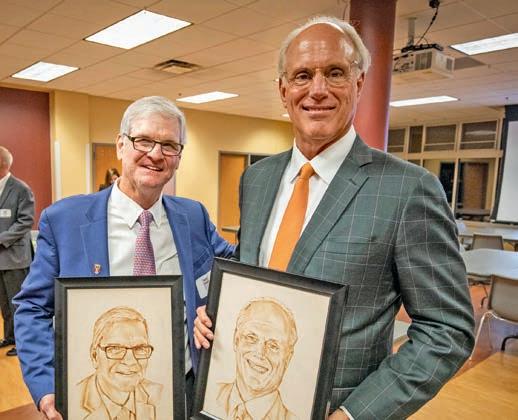
PHOTOS BY GLENNON WILLIAMS
Above: (from left) 2020 Hall of Fame inductees Bob Steiner, Chris Higgins ’88, and, representing Scott Wirtz, his parents, Sandy and Dave Wirtz.
2021 Hall of Fame inductees Larry Linkul ’71 and Brian Lavin ’72
Hall of Fame members in attendance included: (seated, from left) Larry Linkul ’71, Brian Lavin ’72, Chris Higgins ’88, Bob Steiner, Sandy Wirtz, Dave Wirtz, Fran Wirtz; (standing, from left) Henry Autrey ’71, Greg Vitello, Rich Grawer, John Wilson ’75, Dale Burgman, John O’Leary ’95, Dick Donohue, Tim Walsh ’72, Ken Luecke, George Hasser, Felicie Van De Riet, Bill Mueller ’89, Chris Mess, Mike Sawicki ’71, Mike Nooney ’83, Bob Mills ’72, Ed Berns, and Mike Faddis ’71.
HONORING THE 2020 AND 2021 HALL OF FAME INDUCTEES
Alumni, family members, and friends gathered on September 23 for De Smet Jesuit’s Hall of Fame ceremony, honoring 2020 inductees Chris Higgins ’88, Bob Steiner, and Scott Wirtz; and 2021 inductees Brian Lavin ’72 and Larry Linkul ’71. It was a night for celebration, with honorees sharing memories and heartfelt gratitude for De Smet’s impact and the people who have shaped and supported them along the way.


Our school’s tradition of excellence has at its foundation, all of you. Nobody in any hall of fame achieves that honor on his or her own. It takes all of you! ”
CHRIS HIGGINS ’88
Emmy-Award Winning TV Meteorologist; Lt. Colonel, U.S. Air Force Reserves, Former Men’s Club President “I know Scotty benefitted a lot from being a part of De Smet. I think he would be proud knowing that maybe De Smet benefitted a bit from him being here.” ”

SANDY WIRTZ
Mother of posthumous inductee SCOTT WIRTZ ’95, Decorated U.S. Navy SEAL and Member of the Defense Intelligence Agency
NOWTHEN&
The inaugural De Smet Jesuit Hall of Fame induction ceremony took place in 1998. Its purpose is to honor members of the school community who demonstrate the highest principles of integrity and honesty in keeping with the “Men for and With Others” mission of De Smet Jesuit. Inductees are also nominated for bringing recognition to De Smet Jesuit and themselves through their professions, academic or athletic accomplishments, community service, or achievements in the arts and sciences.
The Honorable Henry Autrey ’71 (U.S. District Judge for the Eastern District of Missouri) and Rich Grawer (former head basketball coach and faculty member) were the first honorees. Twenty-three years later, the Hall of Fame is 53 members strong.

BOB STEINER
Former Faculty Member (28 years); Head Basketball Coach (22 years) whose teams won the 1999 State Championship and 10 District Championships “From the first day I walked through the doors of De Smet, I knew I was surrounded by gifted students, by families that valued education.” ”

LARRY LINKUL ’71
Economics, History Teacher; Founder of the Jesuit Cup Golf Tournament; Mentor for Loyola Academy and Boys Hope Girls Hope

BRIAN LAVIN ’72
President of the largest real estate company in Louisville, Ky.; board member for multiple nonprofit charities; first De Smet athlete to earn a Division I football scholarship
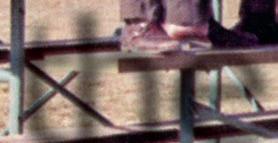
At the Beginning REMINISCING WITH DE SMET’S FIRST GRADUATES

Every school has a distinct history, written by the people who pass through its halls.
BY DEBBIE HIGGINS
Alumni from the Class of 1971 will always be main characters in the story of De Smet Jesuit because of their unique status as the students who experienced everything first and laid the foundation for the generations of Spartans who have followed in their footsteps. “It was a blessing to be part of the beginning and to have teachers who gave us the freedom to develop our own style and traditions,” said Mike Faddis ’71.
From publishing the first school newspaper to establishing the first student council to competing on the first athletic teams, members of the Class of 1971 were the original architects of student life at De Smet Jesuit. To commemorate another first for these alumni and De Smet Jesuit — a 50th class reunion — Odyssey Magazine went back to the archives, and to some ’71 alumni, to get the scoop on student life back in the day.
PHOTOS FROM DE SMET JESUIT ARCHIVES EXCEPT WHERE NOTED
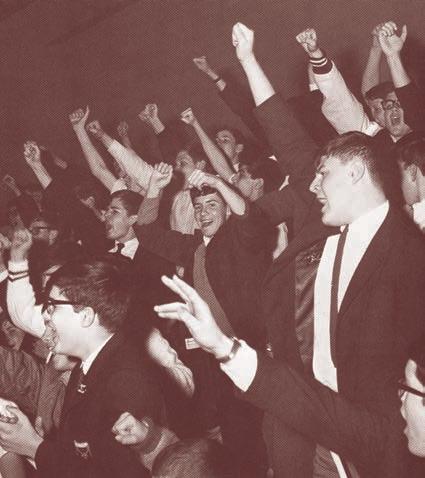
n The principal and dean of discipline occupied the current Admissions Office. n The maintenance workshop at the end of the first-floor hallway was a senior lounge. n The first-floor faculty collaborative space was filled with manual typewriters for typing class. n Yearbook editors developed pictures in a dark room on the third floor.
– FROM THE FIRST DE SMET YEARBOOK, 1968
It Used to be What?
When De Smet Jesuit opened its doors in 1967, it was a 150,000-square-foot, three- story brick building on a 30-acre campus, with no landscaping and a freshly paved parking lot. A spontaneous combustion fire in construction zones nearly delayed the first day of school on September 5 and closed the second and third floors and gym for the entire first semester because of smoke damage. The ’71 alumni who returned for reunion found a campus that was not how they left it. n The choir room was originally an audio-visual room, where classes watched 16 mm films. It later became De Smet’s first theatre, where students built the flooring for the stage in 1970. n Garages now used for maintenance storage were home to handball courts. n The locker room was the storage location for a civil defense water and emergency provisions box, kept on hand in the event of a nuclear attack.
n Students made calls from pay phones in Emerson Lobby. n The turf was a simple grass field, without a track or lights, that students mowed during P.E. class and lined with cut-up tires before football games.
IN 1971:
n Tennis courts filled the space that is now a pond at the Ballas entrance. n The main office and the third floor were residential spaces for the Jesuits (27 were on staff as faculty and/or administrators).
In the Classroom
For ’71 alumni, good handwriting mattered, and rote memorization was the key to earning good grades.
A typical class schedule included the core subjects that have stood the test of time: English, theology, math, history, science, P.E., and world languages (’71 alumni chose from French, Latin, Spanish, Japanese, or German). Typing (on manual typewriters) was a required course for all freshmen. By senior year, mechanical drawing was the required practical arts course. “Guys who liked working with their hands excelled at it, and others just survived it,” said Tom Murray ’71, though alumni have shared that they applied the skills learned to professions ranging from theatre set design to dentistry.
“Typing kept me out of the army infantry in Vietnam,” said Steve Stelfox ’71. With a draft number of 38, Stelfox knew that it wouldn’t be long before he received his draft notice. It arrived 48 hours after he finished his freshman year at Saint Louis University in 1972. During basic training at Ft. Leonard Wood, he took a typing test. “I finished it in less than five minutes because I knew my way around a typewriter,” he recalled. Of the 243 recruits in basic training, 230 went to Vietnam. Stelfox was assigned to work as a personnel specialist in Germany for two years.


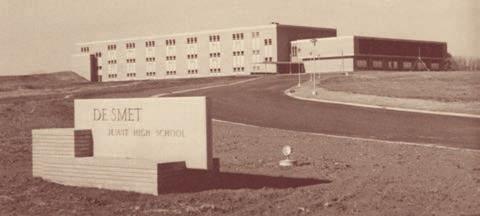
At top left: From their senior yearbook, ’71 classmates (from left) Rusty Smith, Mike Gronemeyer, Tom Eise, John Tulley, Mick Markway, Tom Fitzgerald, and Joe Murray
Above: Landscaping a brand new campus was a monumental task, and some of the first trees planted on school grounds came from St. Stanislaus Seminary. Larry Linkul ’71 has fond memories of the two summers he spent working alongside Br. Jim Marheineke, S.J., learning to drive a tractor on De Smet’s two fields. The best part of those long, hot days? Breaks for one-on-one basketball games with Br. Marheineke.
The Long and Short of It Judgment Under God?!
“The Jesuits had a no-nonsense approach,” said Larry Linkul of the strictly enforced dress code. Maroon blazers and ties were required, though, admittedly, many guys took the shortcut of wearing clip-ons. Students could only remove their blazers and ties if a faculty member gave them permission. Jeans were forbidden on campus. Today, ties are only required for all-school Masses. If a Spartan forgets his tie, he may rent one from the Ignatian Business Leaders club for $5.
Hair length was a source of stress — and demerits — for many ’71 alumni. In the ’71 reunion yearbook, George Zimny remembers “running to the bathroom between classes to wet my hair down so it wouldn’t cover my ears.” Fast forward to 2022 and the dress code requires ponytails for any hair that extends past the collar and reminds Spartans that “Mohawk hairstyles are not an approved hairstyle.”
The blazer and tie requirement didn’t last long; a dress code similar to today’s was adopted for the 1973–1974 school year. Currently, De Smet branded hoodies are the most popular item of dress-codeapproved clothing. “I got a lot of laughs and a lot of demerits,” says Terry Burns ’71 of the consequences he faced for speaking out of turn during class. Spartans always carried demerit cards, earning them for code of conduct infractions. The practice of carrying a demerit card continued until 2018, when De Smet implemented a digital demerit system. Teachers now issue demerits from their laptops or an app on their cell phones. Undoubtedly, the “digital demerit” system would horrify ’71 alumni, who tell elaborate stories of copying cards in attempts to conceal their true number of demerits.
Five demerits required serving JUG after school. According to alumni lore, JUG is an acronym for Judgment Under God. In reality, it is a Latin term meaning “yoke” or “burden.” Larry Morgan, an assistant principal, excused seniors from JUG if they could beat him in free throws or a game of HORSE. But underclassmen serving JUG with Mr. Morgan faced the daunting task of memorizing paragraphs from scientific journals. “Once we felt certain we had it memorized, we had to write out the paragraph,” said Terry Burns. “If we made more than five grammatical errors, we had to start over with a new paragraph. It was rough, sweating it out and trying to get it right.”


Approved hairstyles, then and now. (From left) George Zimny ’71, Asher Wilcox ’24, Stephen Stelfox ’71, and Christian Hill ’24.
Building Traditions
“We spent a lot of time brainstorming and voting on things,” Tom Murray said of establishing the first co-curricular clubs and school events. “It was a rare and incredible experience, being the first students in a new school. We were upperclassmen for all four years.”




At left: The first annual De Smet Car Rally in 1969 challenged drivers to complete a precision driving course following legal speed limits. Of the 22 entries, only six completed the course, and many who did not finish got lost before the first check point. (No GPS!)
COURTESY OF CHRIS SEYER
At left: “It was really crowded,” Tom Murray ’71 said of performing the first musical, A Funny Thing Happened on the Way to the Forum, with a large cast on a small stage. “Our backstage area was a storage closet.”
ACTIVITIES COVERED IN THE 1971 YEARBOOK:
n Student Council – STUCO reps dealt with the “controversial” issues of wearing jeans, smoking, and the quality of cafeteria food. n Student publications – In addition to the yearbook (named the Spartan Olympiad in 1978), the student newspaper was originally called SPARTAN and was supplemented by Informer, a weekly newsletter from STUCO. A literary magazine, Synthesis, was published in the fall and spring. n De Smet Dionysian Players – Hope is the Thing With Feathers, a one-act, was the first play performed on campus. By 1970–1971, the Dionysian Players were performing four shows per year. n Poster Club – This was a precursor to today’s Sports and Spirit club. Students created hand-painted signs (shown above) and hung them everywhere to promote school spirit and attendance at events and games.
“No matter what we did, the support of the school community was just incredible,” said Mike Faddis.
Spartan Social Life
Pep rallies in the gym; dances; intramurals (football, basketball, volleyball, and hockey); a fall carnival; and, at least once, according to reports, a roller-skating party in the cafeteria, were all part of the social scene for students. Mixers after big games were also popular. “The big question was always would we have a rock or soul band? We usually chose either Soultown Revue or Jake Jones,” said Mike Sawicki ’71. up first, according to Mike Bowman ’71, meant time to misbehave. “We tried anything we could think of to delay getting to school on time,” said Chris Seyer ’71. It became routine to see the assistant principal, Mr. Morgan, sitting in the parking lot, waiting for the bus.
Three Visitation Academy students also rode the North County bus. “Once the novelty of having girls with us wore off, they quickly became part of the group,” said Bowman. Chris Seyer strategically chose the seat behind the girls at the front of the bus, and his decision proved lifealtering. “During the ride, I made conversation with whomever would talk to me,” he said. But he especially enjoyed the company of Pam Walsh. The pair (shown left center), began dating after sophomore year and have been happily married since 1976.
It was also common practice for some students to hitchhike home every day after athletic practices from the intersection of Ballas and Ladue, or the stretch of Interstate 270 across from Emerson Road. “We had races to get there after practice, to be the first to get rides,” said John Goessling ’71. Bowman recalled that a key to getting a ride quickly was wearing a De Smet letter jacket or making De Smet branded bookbags visible to passing cars.
Getting There Was Half the Fun
Alumni have fond memories of riding the bus to De Smet Jesuit from north St. Louis County as freshmen and sophomores. The long ride, up to 90 minutes for those picked
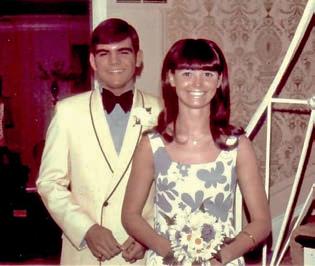
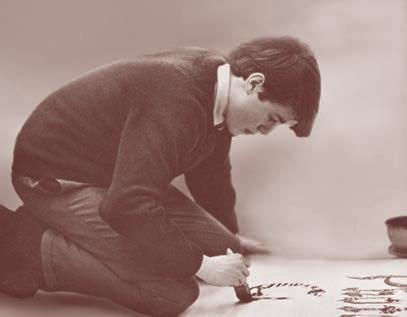

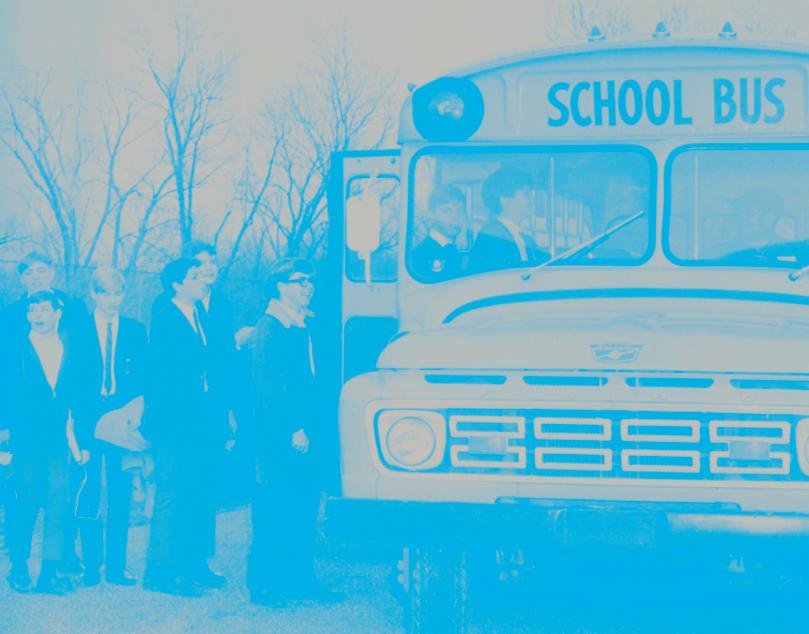
The G.O.A.T.
Ernie Beutenmiller ’71 pulled a senior prank that was so memorable it was included as one of just six “back stories” in the 50th Reunion Yearbook. During lunch one day in the spring of 1971, Beutenmiller snuck to his family’s ranch in Chesterfield to pick up a goat. He released the goat in the cafeteria and mayhem ensued. “The freaking out humans freaked out the goat,” he said. The terrified, bellowing animal ran through the serving line and made a break for the classrooms on the first floor, with Beutenmiller, lariat in hand, in hot pursuit. He finally caught it and led it out the main entrance. A Jesuit simply said, “party’s over,” and very little was ever mentioned again by the administration. Beutenmiller reported, “All together the entire episode lasted less than 10 minutes. No damages, just a few goat droppings and a little excitement.”


A Reunion Done Right


As part of their 50th Reunion weekend, ’71 alumni participated in a Mass of Remembrance to honor their 29 deceased classmates. Planning for the Class of 1971’s 50th reunion celebration began in July 2020 and included 13 committee members who met via Zoom. The ’71 alumni credited their beloved classmate, Jake MacLeod, for organizing the reunion events. MacLeod, the first Spartan ever elected to the office of class president, passed away following a brief battle with COVID-19 in January 2021. His classmates remembered him with great fondness and admiration during reunion events.
In addition to the traditional guys’ night at De Smet on September 25 and a Saturday evening dinner dance, the class gathered for a rosary and Mass of Remembrance on Saturday afternoon to honor their 29 deceased classmates. They shared photos and memories, lit candles, and placed photos of the deceased on the altar. It was a deeply moving tribute and testament to the lifelong impact of their De Smet experience. “They will always be our brothers,” said Jim Finkenkeller ’71 as he read each name. The celebrant for the Mass was Fr. Ralph Houlihan, S.J., who presided over the Class of 1971’s graduation 50 years ago.
REUNION PHOTOS BY DEBBIE HIGGINS
Alumni also received a 197-page 50th reunion yearbook filled with biographies of classmates, memories of school days, interviews with beloved former teachers, trivia quizzes, archival photos, and timelines of key moments in De Smet’s history. In the editor’s preface, Dave Bussmann ’71 wrote, “Our objective with this reunion yearbook is to create a 50th reunion yearbook for the ages, as befitting the founding status of our Class of 1971. We trust that future De Smet 50ths will carry on, or even surpass, the standard set here.”
A high standard, indeed. We expected nothing less from the trailblazers of 1971.

Special thanks to ’71 alumni contributors: Ernie Beutenmiller, Mike Bowman, Terry Burns, Dave Bussmann, Mike Faddis, John Goessling, Larry Linkul, Tom Murray, Mike Sawicki, Chris Seyer, Steve Stelfox, and George Zimny




